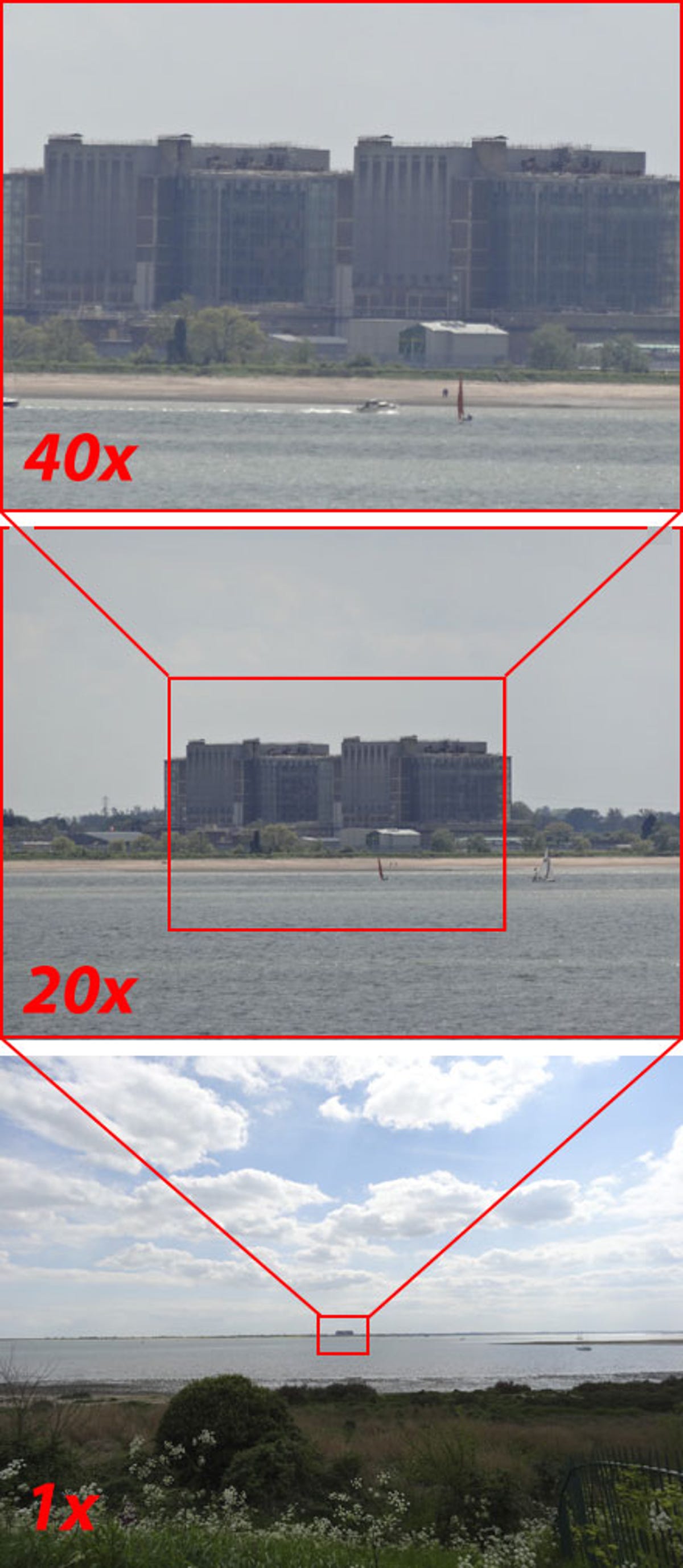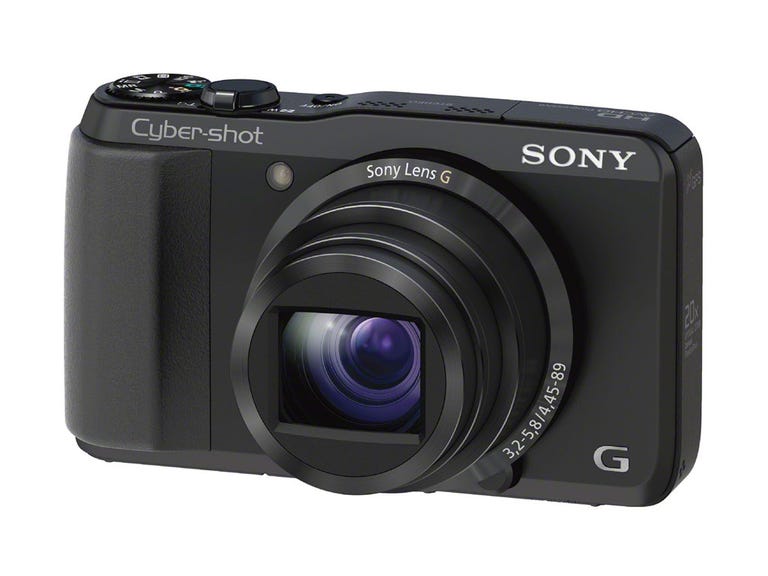 Why You Can Trust CNET
Why You Can Trust CNET Sony Cyber-shot DSC-HX20V review: Sony Cyber-shot DSC-HX20V
A long zoom, high resolution and built-in photo location tagging makes this a great camera for travellers.
There are three things you want in a travel camera: a long zoom, decent resolution, and rugged good looks. With the HX20V, Sony's pretty much nailed each one.
The Good
The Bad
The Bottom Line
This 18.2-megapixel pocket snapper (4896x3672 pixels) has a sturdy chassis without any flex or give, and a 20x optical zoom to the front. Add to that built-in GPS features, a flash that automatically folds away to keep it out of trouble when not in use and a decent movie mode, and it looks like a winner. To see whether that was indeed the case, I took it out for a spin.
The zoom
The HX20V feels as good as it looks. There's a chunky rubber grip at one end that helps you keep a sturdy hold, even with just one hand. This is important when you're using the maximum 20x optical zoom and, even more-so, the 40x option.
Sony's sales literature claims that the HX20V features '40x Clear Image Zoom' which, the company explains, 'doubles [the] 20x optical zoom range to an effective 40x, filling the frame with distant subjects while maintaining superb image quality'.
While I can't argue with the first half of that statement, the second half didn't chime with what I discovered in my tests.
The HX20V's zoom is extraordinary for so small a camera, and a real asset. If you're looking for a travel camera and don't want to carry a chunky body and several lenses then the optical zoom here gives you the equivalent of 25-500mm in a regular 35mm camera. At the widest end of that scale, it's perfect for landscapes, and at the longer end, it's great for telephoto shots of distant subjects.

If however you push it beyond the equivalent of 500mm, to the fullest extent of the 40x zoom (at which point the captured image effectively matches a 1000mm lens' field of view on a 35mm camera), you'll notice some interference when playing it back on your computer.
The seagull below was shot at the maximum 40x zoom. When viewed at less than life size the result is impressive, as can be seen from the zoomed out frame. Zoom in to 100 per cent however, as shown in the cropped sample, and the image is dappled and unsharp.
Fortunately this won't be an issue if you want to publish your images without cropping into them on a photo-sharing site such as Flickr. Similarly the effect won't be particularly noticeable in photos printed using an online printing service, where the resolution probably won't be sufficient to reveal this lack of clarity. Do bear it in mind though if you intend to crop just a portion of a 40x-zoomed image for use later on.
At the maximum optical zoom of 20x, the lens is impressively bright with a maximum aperture of f/5.8. Pulling back to full telephoto widens this to f/3.2.
Settings
If you're happy to leave it up to the camera to select the best combination of aperture, sensitivity and other settings, there are 15 scene modes to choose from. Between them, these modes cover regular scenarios such as fireworks and snow, alongside less common options like backlight correction HDR, soft skin and anti-motion blur.
The mode selection wheel gives you direct access to two auto modes -- intelligent and superior -- the former of which sets the best exposure, while the latter adds in blur and noise reduction. I performed my tests using the former -- intelligent auto -- to emulate most end users' experiences.
In this mode it consistently produced bright, evenly-exposed images in all lighting conditions.
The rear display is home to the usual indicators, such as flash, for the selected mode, to which you can add useful shooting data, including a level to keep your horizons straight and a histogram to warn of over- or under-exposure.
The cottage, below, is characterised by the three colours to which digital cameras are most responsive: green (foliage), blue (sky) and red (tiles and letter box). The HX20V has recognised a broad range of tones in each of these colours, with plenty of details in the foliage and smooth, accurate fades in the sky where the light cloud cover affects the visibility of the blue.
There is also evidence however of minor chromatic aberration. This manifests itself as a turquoise or pink fringe on the edge of sharp contrasts. It is caused by the lens failing to precisely focus each of the wavelengths of light in the visible spectrum in sync with each other at the point where they reach the sensor. It's most often evident in the corners of the frame, as is the case here, where it is manifested as a pink halo on the pruned branches in the upper right corner.
This is a shame as the lens is otherwise excellent, passing the geometry test with flying colours, as can be seen in the test target below which shows no sign of either barrel or pincushion distortion.
Low-light performance was good, but not quite up to the standard of the Sony Alpha SLT-A57. The image below was shot at ISO 3200, which is the highest setting the camera will self-select in intelligent auto mode (even though in this instance, it was user selected in Program mode).
Colours were accurate across the spectrum and in all light levels, but whereas it was possible to read the writing on some labels from this distance in the A57's test, the HX20V did not deliver similarly-impressive results. Take a look, for example, at the smaller text on the back of the green label.
The highest possible ISO setting is 12,800, with compensation of +/-2.0EV in 1/3EV steps. The shortest exposure is 1/1600 second, while the longest tops out at 4 seconds.
Macro mode will take you as close as 1cm from your subject, at which point the level of detail it records is very fine, with a tight focus and effective fall-off helping to isolate the subject.
Video test
The HX20V is an HD camera worthy of the name, achieving high-quality movie results in 1920x1080 50p format.
Footage is very sharp and it has no trouble with fast-moving subjects such as water flowing over a weir. Colours are bright and realistic -- just as they were in the stills tests -- with plenty of detail in evidence throughout.
There was no hint of the zoom action affecting the soundtrack in these tests, and the picture was very effectively smoothed out when used while walking about thanks to the two levels of stabilisation.
Finally, compensation for changing light levels is fast and smooth, and helped the HX20V achieve a close to perfect all-round video performance.
Conclusion
There's plenty to like about the HX20V. Image quality is good, and you can safely leave it in one of its two automatic modes with confidence that they'll deliver an impressive set of shots.
While the 20x optical zoom is impressive however, there was no evidence in my tests to support the claim that the 40x option maintains superb image quality, especially when the results were blown up to 1:1.
That in no way should count against it when it comes to making a buying decision though. Such digital enhancements should always be treated as a bonus rather than a core feature. My advice would always be to rely on any camera's optical talents whenever possible, and consider disabling everything else -- an option you'll find in the HX20V's firmware.
Clear Image Zoom aside, it produced consistently bright, colourful, accurate results, it's easy to get to grips with in very short order and the added extras -- like automatic geotagging -- are a boon for organised travellers who want to remember not only what a place looked like, but also where it was.
If you love to wander the globe and take tons of photos along the way, you can be sure that the HX20V won't disappoint.


